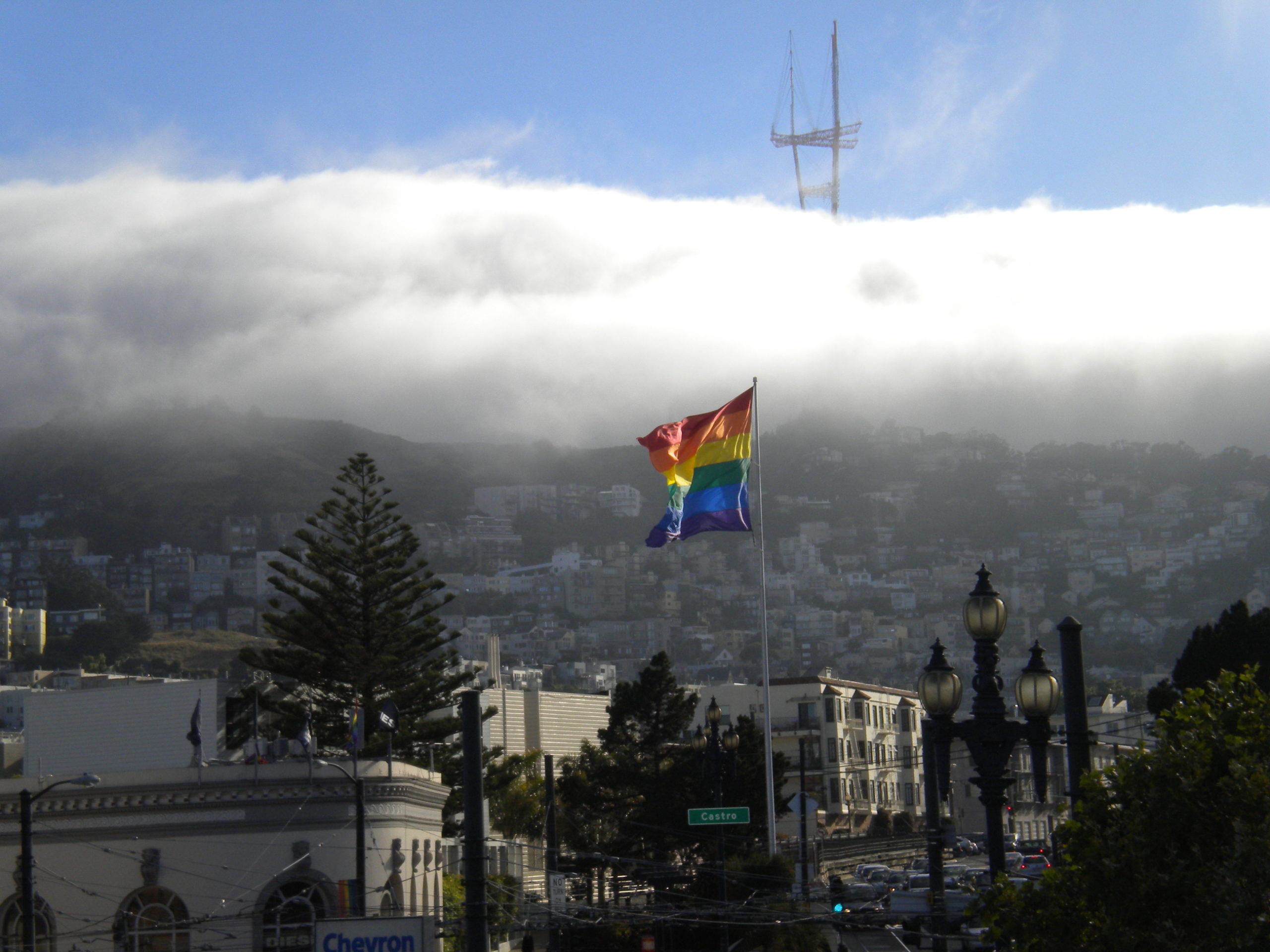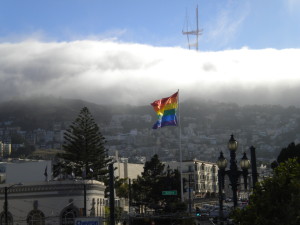
 San Francisco holds its annual San Francisco Lesbian Gay Bisexual Transgender Pride Celebration on the last Sunday of every June as it has every year since the 1969 Stonewall Riots in New York City.
San Francisco holds its annual San Francisco Lesbian Gay Bisexual Transgender Pride Celebration on the last Sunday of every June as it has every year since the 1969 Stonewall Riots in New York City.
And in recent years, it’s a celebration that has often turned to violence. In 2010, one person was killed and another two were injured in what police called gang-related violence from straight outsiders who were there to party in the streets, not celebrate Pride. In 2013, a woman was kicked in the head during a robbery, knocking her unconscious, resulting in the conviction and 6-year prison sentence for the perpetrator. And in 2014, the assault of a member of the Sisters of Perpetual Indulgence during the Castro’s Pink Saturday celebration has led to calls of changing or suspending the celebration.
Like every year, I’ve heard plenty of straight people asking why we need a parade, why we have to flaunt it. Some gay people have also always questioned why we “flaunt it” as well. (I separate them from other gay people who now steer clear of Pride because of the crowds, the drunkenness, the commercialism over politics, and the influx of straight people who are not there out of solidarity but rather to gawk or have their own party in the streets. I get those concerns as totally separate issues.)
So why do we need a parade? And why don’t we have straight pride parades?
The fact is, there are plenty of parades in the United States organized by straight people. And before you object that those parades are inclusive of everyone, the truth is that they are not. You only have to look to the sad history of New York City’s Ancient Order of Hibernians to see how exclusive they can be.
But with a few exceptions like Independence Day and Flag Day parades, Gay Pride parades actually have a lot in common with most of the other cultural parades in the United States. Most other parades aren’t organized by the general population for the enjoyment of all. Like Gay Pride, a commemoration of the Stonewall Riots and the systemic political and physical oppression of gay people, the other cultural parades mostly have their origins in oppressed minorities organizing to demonstrate their political strength and unity.
St. Patrick’s Day parades may be the best example of this. The parades were not brought over from Ireland by Irish immigrants. In Ireland, St. Patrick’s Day was a Catholic holiday celebrated by going to church. It became an official feast day in the 1600s. The very first St. Patrick’s Day parade was celebrated not in Ireland but rather in Boston, Massachusetts on March 17, 1737 — nearly 40 years before the colonies would begin to secede from Great Britain. The first parade in Ireland wouldn’t be celebrated until 1931, in Dublin, nearly 200 years after it originated as an Irish-American tradition.
And why did Irish-Americans need such public displays when their forefathers in Ireland did not? Because in the colonies, they were oppressed. They struggled to find work at a time when businesses routinely posted signs in their windows that said “Irish need not apply.” They were routinely beaten in the streets. The first parades were organized by Irish immigrants as a way to rally their community, organize them into political action, and demonstrate their unity and strength to the general population.
Now the St. Patrick’s Day parades have evolved into a generalized celebration of Irish heritage. They’ve spread back to Ireland and other countries with Irish diaspora. They’ve given the general population an excuse to go on a drunken binge and be “Irish for a day,” forgetting how the day originated to fight political oppression.
Cinco de Mayo, too, is a Mexican-American custom that is largely ignored in Mexico. It does not commemorate Mexican Independence, as is commonly misunderstood. Rather, it celebrates the Mexican Army’s unexpected victory on May 5, 1862 against a French army that was double in size and vastly more experienced, an army that had not been defeated in almost 50 years. The first celebrations outside of the Mexican state of Puebla was in California in 1863, where it has been celebrated continuously ever since and has become a celebration of Mexican heritage. In the 1940s, it became more politicized as the Chicano movement grew strength, and crossed over as a mainstream celebration in the 1980s. How many people with absolutely no Latin heritage rush out after work on May 5th to drink margaritas and tequila shots?
Columbus Day of course celebrates Europeans’ discovery of the Americas by Christopher Columbus on October 21, 1492. It has been celebrated informally since colonial days, but it was a relatively small observance until Catholics, who were oppressed in the largely Protestant colonies, latched onto it to celebrate a Catholic hero. Later, Italian-Americans — also oppressed like the Irish — adopted it as a day to celebrate Italian heritage and fight against political strife in the U.S. The first Columbus Day parade was organized by Italian-Americans in New York City in 1866. It became a state holiday in Colorado in 1907, the first state to recognize it, and then a federal holiday in 1934.
In all of these cases, these cultural celebrations — like Gay Pride — originally flourished in the United States as a way for oppressed minority cultures to band together, find unity, and publicly demonstrate political strength and solidarity.
There are some exceptions that don’t originate from oppressed minorities, usually of national patriotic origins like Flag Day, Veteran’s Day, and Independence Day parades. But most of the other seemingly “inclusive” parades — like the Rose Bowl parade, the Thanksgiving Day Parade, the Christmas and New Year’s Parades — were not spontaneous American celebrations but rather were manufactured or fostered by businesses to cultivate a commercial and consumerist culture.
Like St. Patrick’s Day and other cultural celebrations in the United States, Gay Pride parades were born from political strife. The very first Gay Pride Parades were held in New York and San Francisco to commemorate the first anniversary of the Stonewall Riots. When the first Pride Parade was held in San Francisco in 1970, it was a full five years before same-sex sex was legalized in California — and 33 years before the U.S. Supreme Court would overturn those laws nationwide. It would take nearly a decade for employment nondiscrimination laws based on sexual orientation to pass in San Francisco, and nearly a decade more before they would be enacted statewide. They still have not been adopted nationally. But those political advances did not happen in a vacuum. Yes, there was a lot of behind-the-scenes lobbying that helped, and mobilizations by LGBT organizations to get allies elected. But in addition, it took public demonstrations by the gay community, including Pride parades, to help demonstrate that we were a small but cohesive political force.
Of course, many young gay people have forgotten those political origins. And many straight people who are more comfortable with gay culture use it as an excuse to be “gay for a day,” wear beads, dance in the streets and get drunk. That used to be just a handful of our supportive straight allies, but now it’s crossed over to the point where some straights still uncomfortable with gays nevertheless come out to the streets to party.
And if the mainstream population and even parts of our own community have forgotten Gay Pride’s political origins? Well, in the end, is that so different than St. Patrick’s Day?